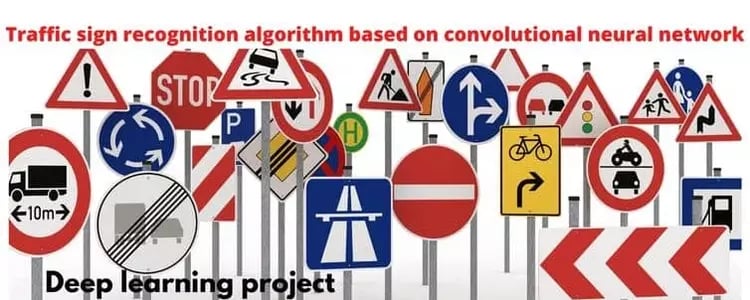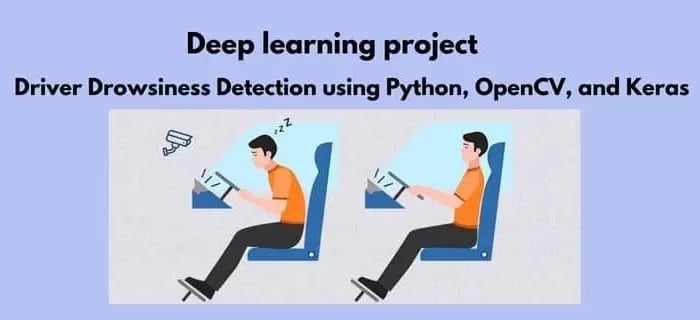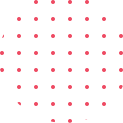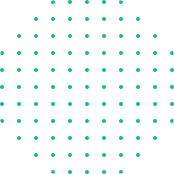Data Science Project Ideas for final year engineering students
Data Science is rapidly emerging as one of the most promising career options in the current era, with growing popularity and increasing demand in the job market. Recent reports suggest that the demand for skilled Data Scientists is set to soar even higher in the coming years, indicating a bright and lucrative future for those pursuing a career in this field.
By working in real-time Data Science Projects will enhance your technical skills and confidence which will further help you land in high paying jobs in the industry The final year of computer science and engineering is one of the most crucial stages of your education and professional grooming; Students get to put their theoretical knowledge to test. This is when students work on practical assignments and real time projects.
100+ Best Final year Data Science Projects with Source Code
Data science projects with source code which will help to build the real time projects in data science. These will help boost confidence and build the necessary industry skills Finding a perfect idea for your project is something that concerns for Final year computer science students or CSE final year students, we have compiled a list of over 500+ Python Data science project ideas just for BE,Btech,Mtech CSE students which helps them to become Data science engineer or Data scientist
Data science projects for Final year students in Python.
-
2023 IEEE Python DATA SCIENCE Projects for the final year engineering students
-
data science projects for final year
-
data analysis projects
-
data science projects for beginners
-
data science projects in python
-
data science projects GitHub
-
data analysis project examples
-
python data science projects
-
python data analysis projects
-
data analytics projects for students
-
projects on data science
-
open source data science projects
-
data science capstone project
-
data science projects with python
-
data analysis projects in python
-
data science projects Kaggle
-
best data science projects
IEEE data science projects with papers.
-
Prediction of chronic kidney disease (CKD) using Data Science.
-
Data Science Framework - Heart Disease Predictions, Variant Models and Visualizations
-
Real-Time Smart Attendance System using Face Recognition Techniques.
-
Supervised Machine Learning Algorithms for Credit Card Fraud Detection: A Comparison.
-
Prediction of House Pricing using Machine Learning with Python.
-
Utilizing a Data analytics project to increase student awareness of contemporary global issues.
-
Prediction and Diagnosis of Heart Disease Patients using Data Mining Technique
-
Design And Implementation of Domestic News Collection System Based On Python.
-
Analysis of Chronic Kidney Disease Dataset. a Data science project.
A movie recommendation system using data science.
At CITL-Tech Varsity we have the Latest 2023 IEEE DATA SCIENCE Projects for the final year engineering students IN BANGALORE.
We have projects in various categories like data science projects in python, data science projects GitHub, data analysis project examples, python data analysis projects, data analytics projects, open-source data science projects, data science capstone projects, data science projects with python, data analysis projects in python and data science projects Kaggle.
FOR OUTSTATION STUDENTS, WE ARE HAVING ONLINE PROJECT CLASSES BOTH TECHNICAL, CODING and Installation. FOR DETAILS, CALL or WhatsApp: 9986709224 /98860-94611
Data science can be defined as a blend of mathematics, business acumen, tools, algorithms and machine learning techniques, all of which help us in finding out the hidden insights or patterns from raw data which can be of major use in the formation of big business decisions.
AT CITL you can develop projects in Data Science using Python, R Programming, Statistics, Machine Learning, Artificial Intelligence, Deep Learning, Neural Networks, TensorFlow, SQL. You can get complete hands-on training on the project you have chosen in the data science domain. You can get new ideas of projects in the data science domain& the latest 2021 IEEE papers.
List of Advanced IEEE Data Science Project ideas and Topics with paper
1. Detection and Recognition of Traffic Signs Using Convolutional Neural Networks.
 An important component of the intelligent transportation system is the traffic sign recognition system (TSRS) (ITS). Driving safety can be increased by having precise and efficient traffic sign recognition skills.
An important component of the intelligent transportation system is the traffic sign recognition system (TSRS) (ITS). Driving safety can be increased by having precise and efficient traffic sign recognition skills.
This study presents a deep learning-based traffic sign recognition method that focuses primarily on the identification and categorization of circular traffic signs. An image is first pre-processed to highlight crucial details. Second, the Hough Transform is employed for area detection and localization.
Finally, deep learning is used to classify the detected road traffic signs. This article proposes a method for identifying and detecting traffic signs by image processing, which is then integrated with a convolutional neural network (CNN) to sort the traffic signs.
CNN may be utilized to complete a variety of computer vision tasks due to its high recognition rate. CNN is implemented using TensorFlow. We can recognize the circular sign in the German data sets with greater than 98.2% accuracy.
2. A More Effective Lightweight Convolutional Neural Network Approach for Face Recognition.
More hardware resources are needed as convolutional neural networks continue to advance. Convolutional neural networks that are lightweight exhibit unique advantages in this regard.
Based on the fully connected network topology of Dense Net, three new types of lightweight convolutional neural networks are created in this study, and training tests are run using a self-created face database.

Test results demonstrate that, within certain bounds, increasing the depth of the network can strengthen the training speed of network convergence. For example, 7 layers of the network have parameters that are 88% greater than those of 4 layers, but the training convergence rate is increased by three times.
It was also demonstrated that the entire network structure on the lightweight convolution neural network is feasible and provided a method for improving performance...
3. Diagnosis Of Type 2 Diabetes
Chronic diseases include diabetes. The risk of diabetes is increasing so fast, damaging human health. Support Vector Machine and Random Forest are two different algorithms that are combined in the suggested model to predict diabetes.
Utilizing a authentic dataset obtained from the Security Force Primary Health Care. The proposed model had a ROC of 99% and a 98% accuracy rate. The findings demonstrates that Random Forest algorithm is has greater accuracy score when compared to Support Vector Machine.
4. Examining driver sleepiness based on his visual actions.
One of the leading factors in traffic accidents and fatalities is drunk driving. As a result, identifying driver weariness and related signs is a current research topic. The majority of traditional approaches are either vehicle-, behavior-, or physiological-based.
Some systems involve expensive sensors and data handling, while others are invasive and distract the driver. As a result, a real-time, low-cost system for detecting driver drowsiness is devised in this work.
The created system uses a webcam to record the video, and image processing techniques are used to identify the driver's face in each frame. facial features On the basis of established adaptive thresholding, tiredness is recognized on the detected face based on the calculated eye aspect ratio, mouth opening ratio, and nose length ratio.

There have also been offline implementations of machine learning algorithms. Support vector machine-based classification has been successful with a sensitivity of 95.58% and a specificity of 100%.
On the basis of established adaptive thresholding, tiredness is recognized on the detected face based on the calculated eye aspect ratio, mouth opening ratio, and nose length ratio.
There have also been offline implementations of machine learning algorithms. Support vector machine-based classification has been successful with a sensitivity of 95.58% and a specificity of 100%.
5. Cancerous Profiles Classification using Data science
For the treatment of cancer, there are numerous choices. The type of cancer, its severity (stage), and, most importantly, its genetic heterogeneity all have an impact on the suggested course of treatment for a given patient.
The targeted medication therapies are likely to be ineffective or react differently in such a complicated setting. Understanding cancerous profiles is necessary to study anticancer drug response. These malignant profiles contain details that may help identify the underlying causes of the development of the disease.
6. Deep Convolutional Neural Networks to Predict Age and Gender.
Identification of age and gender has grown to be crucial to network, security, and care. It is frequently used to give kids access to age-appropriate content. It is used by social media to distribute layered advertisements and marketing to increase its reach.
Face recognition has advanced so much that we must map it out further to produce more usable results using various methods. In this article, we suggest deep CNN to enhance age and gender prediction from considerable results can be produced and a major improvement can be shown in numerous tasks including face recognition.

We propose a straightforward convolutional network architecture to significantly advance the state of the art in this area. Paul Viola and Michael Jones' effective strategy, which uses deep CNN to train the model, increases the accuracy of Age and Gender to 79% utilizing HAAR feature-based cascade classifiers.
Using machine learning, a cascade function is trained using a large number of both positive and negative images. After that, it is applied to find items in other pictures.
7. Identifying the different medicinal plant from the dataset an data science approach
To make it easier for people to identify plants, classification of plant species has received a lot of attention in the scientific community. Convolutional neural networks (CNN) have produced outstanding computer vision achievements lately, particularly in the area of picture classification.
Typically, it is challenging for people to identify appropriate therapeutic plants. It takes a skilled botanist's sensibility to complete the time-consuming laborious work. In this study, we presented an automated system for the classification of medicinal plants that will assist individuals in swiftly identifying valuable plant species.
The introduction of a new collection of Indian medicinal plants includes some cutting-edge photographs gathered from various sources and data gathered from various locations of the nation. After that, high-level features are extracted for the classification learned using the data augmentation technique using a three-layer convolutional neural network.
8. Air pollution prediction system for smart cities - data science project
Each and every living thing requires clean, fresh air at all times. Without such air, no living thing can survive. But in today's world, air pollution is one of the biggest threats. Our air is becoming more and more polluted as a result of cars, farming, manufacturing, industries, mining, and the use of fossil fuels.
These activities release pollutants into the air that are detrimental to all living things, including Sulphur dioxide (SO2), nitrogen dioxide (NO2), carbon monoxide (CO), ozone (O3), and particulate matter (PM10 & PM2.5). Numerous health problems are brought on by the air we breathe every moment.
Therefore, we require a good system that can anticipate such pollutions and contribute to improving our environment. It prompts us to explore for cutting-edge methods for forecasting these contaminants. As a result, we are employing data mining to forecast air pollution in our smart city.
We use the multivariate multistep Time Series data mining technique with the random forest algorithm in our model. Our approach uses these contaminants' time series data. Additionally uses temperature, wind speed, and direction data to inform our model's prediction of air pollution.
This methodology makes decisions more trustworthy and precise for environmental protection agencies in smart cities while reducing complexity and improving efficacy and practicability.
TOP 10 and Best Data Science Projects for Beginners
Following is the list of data science project ideas for students who are beginners to Python or data science. These data science projects in python ideas will provide you with all of the necessary tools and algorithms that are needed to succeed as a data science engineer or developer The following are the beginner data science project ideas with source code.
1) Predicting House Prices: Use a dataset of real estate prices and build a regression model to predict house prices based on various features like location, number of bedrooms, and square footage.
2) Credit Risk Analysis: Use a dataset of customer credit history to build a classification model to predict credit risk and identify customers who may be at a higher risk of defaulting on their loans.
3) Churn Prediction: Use a dataset of customer information to build a model to predict churn, i.e., customers who are likely to stop using a particular product or service.
4) Recommendation Engine: Use a dataset of user preferences to build a recommendation engine that suggests relevant products or services to users.5) Fraud Detection: Use a dataset of financial transactions to build a model to detect fraud and identify suspicious transactions.
6) Customer Segmentation: Use a dataset of customer information to perform clustering and identify distinct customer segments based on demographic, geographic, or behavioral data.
7) Image Recognition: Use a dataset of images to build a model that can classify objects or identify specific features in images.
8) Sentiment Analysis: Use a dataset of text data to perform sentiment analysis and classify text as positive, negative, or neutral.
9) Health Data Analysis: Use a dataset of health data to identify trends, patterns, and insights that can inform public health policies and interventions.
10) Social Media Analysis: Use a dataset of social media data to analyze user behavior, sentiment, and engagement, and identify influencers or popular trends.
These Data science projects can be done using popular data science tools such as Python, R, and their associated libraries and frameworks
Chronic kidney disease (CKD) is a perennial condition where the kidneys deteriorate and stop functioning gradually. This disease has become one of the major public health concerns worldwide. It is insidious, often recognizable only by laboratory abnormalities until its latest stages. The main motive of this work is to ascertain the existence of chronic kidney disease by imposing various classification algorithms on the patient medical record. This research work is primarily concentrated on finding the best suitable classification algorithm which can be used for the diagnosis of CKD based on the classification report and performance factors. Empirical work is performed on different algorithms like Support Vector Machine, Random Forest, XGBoost, Logistic Regression, Neural networks, Naive Bayes Classifier. The experimental results show that Random Forest and XGBoost give better results when compared to other classification algorithms and generates 99.29% accuracy.
Heart disease refers to a condition where the blood vessels are blocked and the heart stops functioning. Many of the researches are concluded that this disease has become number one cause of death cases. It is alarmed that abnormalities can only be detected and recognized in its last stages. However it is curable if the person detects the disease earlier. The goal of this paper is to develop a data science framework which addresses the how to discover the chances of existence of heart disease by applying different classification algorithms, influence and distribution of various parameters are playing major role in disease prediction along with visualizations on Cleveland cardiovascular medical records. To minimize the diagnostic error caused by the complexity of visual and subjective interpretation. This work majorly aims to find the optimal classification algorithm on the heart disease affected health records and majorly influencing parameters. This can be used for predicting the heart disease on the classification reports. This experimental work focuses on the performance of the system was tested and classified by various algorithms such as Random Forest, Vector support, Logistic regression and XG-Boost for building the heart disease prediction model and evaluates the performance of the model.
The management of the attendance can be a great burden on the teachers if it is done by hand. To resolve this problem, smart and auto attendance management system is being utilized. But authentication is an important issue in this system. The smart attendance system is generally executed with the help of biometrics. Face recognition is one of the biometric methods to improve this system. Being a prime feature of biometric verification, facial recognition is being used enormously in several such applications, like video monitoring and CCTV footage system, an interaction between computer & humans and access systems present indoors and network security. By utilizing this framework, the problem of proxies and students being marked present even though they are not physically present can easily be solved. The main implementation steps used in this type of system are face detection and recognizing the detected face. This paper proposes a model for implementing an automated attendance management system for students of a class by making use of face recognition technique, by using Eigenface values, Principle Component Analysis (PCA) and Convolutional Neural Network (CNN). After these, the connection of recognized faces ought to be conceivable by comparing with the database containing student's faces. This model will be a successful technique to manage the attendance and records of students.
In today's economic scenario, credit card use has become extremely commonplace. These cards allow the user to make payments of large sums of money without the need to carry large sums of cash. They have revolutionized the way of making cashless payments and made making any sort of payments convenient for the buyer. This electronic form of payment is extremely useful but comes with its own set of risks. With the increasing number of users, credit card frauds are also increasing at a similar pace. The credit card information of a particular individual can be collected illegally and can be used for fraudulent transactions. Some Machine Learning Algorithms can be applied to collect data to tackle this problem. This paper presents a comparison of some established supervised learning algorithms to differentiate between genuine and fraudulent transactions.
This paper provides an overview about how to predict house costs utilizing different regression methods with the assistance of python libraries. The proposed technique considered the more refined aspects used for the calculation of house price and provide the more accurate prediction. It also provides a brief about various graphical and numerical techniques which will be required to predict the price of a house. This paper contains what and how the house pricing model works with the help of machine learning and which dataset is used in our proposed model.
Computational thinking is irrefutably a must-have skill in today's digital world. This is why it is a requisite course in most college curricula. Computational thinking is a broad term encompassing fundamental concepts of computing such as formulating problems and expressing their solutions in computational steps that can be processed by a computer. The ability to organize and analyze data is also a part of computational thinking. Following this paradigm, educational institutions have adopted various methods to teach computational thinking including programming. This paper will explore a specific project within the computational thinking course taught as an introductory course in all major programs at the Higher Colleges of Technology in the United Arab Emirates. The intention of the paper is to demonstrate how a project-based data analytics assessment in such a course can be used to foster in students, a greater awareness of a contemporary and critical global issue such as waste management. To examine the effectiveness of this project, the paper documents and evaluates the work of a group of students who carried out data analysis on secondary data collected from a notable website on “waste management”. The methodology implemented for this task is developed based on a prescribed course syllabus and assessment structure which promotes student-centered and inter-disciplinary learning.
We are living in a post modern era and there are tremendous changes happening to our daily routines which make an impact on our health positively and negatively. As a result of these changes various kind of diseases are enormously increased. Especially, heart disease has become more common these days.The life of people is at a risk. Variation in Blood pressure, sugar, pulse rate etc. can lead to cardiovascular diseases that include narrowed or blocked blood vessels. It may causes Heart failure, Aneurysm, Peripheral artery disease, Heart attack, Stroke and even sudden cardiac arrest. Many forms of heart disease can be detected or diagnosed with different medical tests by considering family medical history and other factors. But, the prediction of heart diseases without doing any medical tests is quite difficult. The aim of this project is to diagnose different heart diseases and to make all possible precautions to prevent at early stage itself with affordable rate. We follow ‘Data mining’ technique in which attributes are fed in to SVM, Random forest, KNN, and ANN classification Algorithms for the prediction of heart diseases. The preliminary readings and studies obtained from this technique is used to know the possibility of detecting heart diseases at early stage and can be completely cured by proper diagnosis.
In the era of rapid development of the Internet, network media has become a new window for people to understand the outside world due to its fast speed and wide spread. News is a channel for people to know about Surrounding Information, but thousands of news are produced every day on the Internet. These news are needed or not in inside. How to efficiently and accurately obtain the news content we need from the website is a great need in people's life. This system aims to collect news on specific websites and return it to users with concise and clear pages. Users can search specific keywords to select news that they are interested in so as to realize personalization for users. This system crawls and processes the domestic financial news content, which is convenient for people to process the information. In order to avoid duplication of information, the system has also implemented a self-defined deduplication rule. In the specific implementation, the system is written using Python in conjunction with the Scrapy framework and Django framework, which can simplify the system code to a certain extent. The practical value of this system lies in the timely, efficient and convenient access to domestic financial news that people care about, need and are interested in
Crime analysis and prediction is a systematic approach for identifying and analyzing patterns and trends in crime. Our system can predict regions which have high probability for crime occurrence and can visualize crime prone areas. With the increasing advent of computerized systems. The main aim is that instead of focusing on cause of crime occurrences we are focusing mainly on crime factors. By using the concept of Data Mining, we can extract previously unknown useful information from an unstructured data. We can approach between computer science and criminal justice to develop a data mining procedure that can help solve crimes faster. Criminals also be predicted based on the crime data. Events of crime and illegal activities have increased in the past few years. We propose a system which can analyze, detect and predict various crime probability in a given region. To accomplish this, we obtain raw data from police department official website. On this pre processed data sets, by applying Naïve Bayesian algorithm we create a predictive model which analyze the data and helps to predict the trends of crimes for a given region in a future. With the aim of securing the society from crimes, there is a need for advance system and new approaches for improving the crime analytics for protecting their community. Accurate real time crime predictions help to reduce the crime rate. But remains challenging problem for the scientific community as a crime occurrences depend on many complex factors. The hidden relationship among the data which is further used to report and discover the crime pattern s that is valuable for the crime analytics to analyze these crime networks by the means of various interactive visualization for crime prediction and hence is supportive in prevention of crimes. This probabilistic trend is also displayed in form of graphs for easy understanding of the police department. This paper explains various types of criminal analysis and crime prediction using several Data Mining techniques. Towards this goal, crime hotspot prediction has previously been suggested. Crime hotspot prediction leverages past data in order to identify crime hotspots, while ignoring the predictive power of other data such as urbanor social media data. Crime data analysts can help the law enforcement officers to speed up the process of solving crimes. Using the concept of data mining we can extract previously unknown, useful information from an unstructured data. Here we have an approach between computer science and criminal justice to develop a data mining procedure that can help solve crime faster.
Currently, there are many people in the world suffering from chronic kidney diseases worldwide. Due to the several risk factors like food, environment and living standards many people get diseases suddenly without understanding of their condition. Diagnosing of chronic kidney diseases is generally invasive, costly, time-consuming and often risky. That is why many patients reach late stages of it without treatment, especially in those countries where the resources are limited. Therefore, the early detection strategy of the disease remains important, particularly in developing countries, where the diseases are generally diagnosed in late stages. Finding a solution for above-mentioned problems and riding out from disadvantages became a strong motive to conduct this study. In this research study, the effects of using clinical features
A recommendation system provides suggestions to the users through a filtering process that is based on user preferences and browsing history. The information about the user is taken as an input. The information is taken from the input that is in the form of browsing data.












